Palms are a complete sensory experience. The rustle of fronds in the wind, curving shadows, textured trunks, scented flowers and luscious fruits create an intoxicating atmosphere. One of the earliest cultivated fruit trees, the palm seems on loan from Eden. But palms are often overlooked as design elements, becoming the equivalent of background noise. Ask anyone to draw a palm and what do you get: a long stem, a tuft of leaves, maybe a couple of coconuts—and there, you’ve captured it, right? Not true. The secret about palms that garden designers from India are learning is that among the 2,500 species of this diverse plant family are varieties for nearly every landscape need, making them a tremendous garden resource that has essentially been hiding in plain sight.
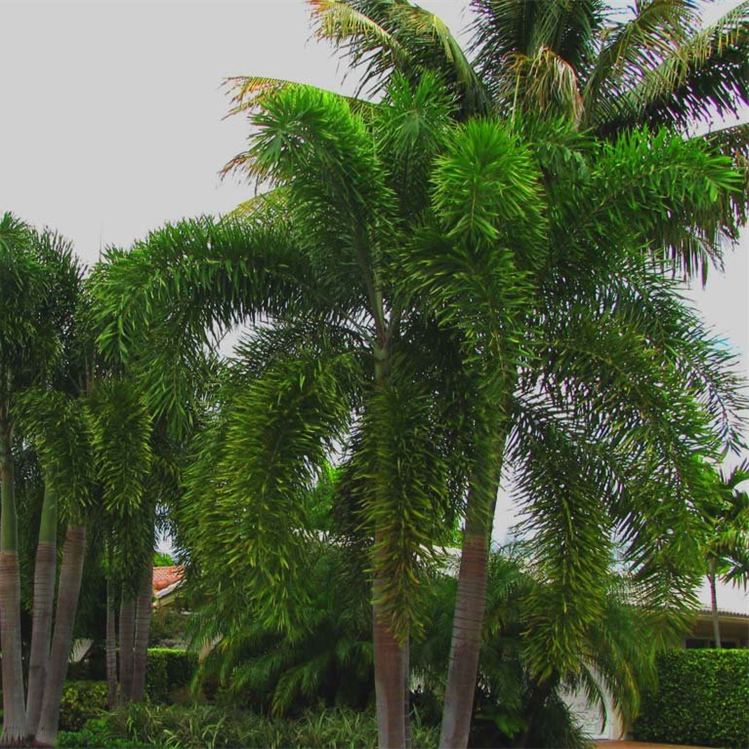 Foxtail Palm
Foxtail Palm
Foxtail Palm
he Foxtail palm tree is the most used landscape palm tree in the world. After being introduced to the Indian growers, the foxtail palm has gain unprecedented popularity, which has lead the foxtail palm to be widely commercially grown throughout the India. The Foxtail Palm Tree is native to Australia. The Foxtail palm has gain popularity because it is very durable and will tolerate a wide variety of soil conditions. This palm tree of medium stature, is also drought tolerant and very adaptable to many environments. The Foxtail Palm was so named because of its wonderful spiral leaves which appear as a fox’s tail. Usually with no more than seven to nine leaves to its canopy, the Foxtail Palm is a beautiful palm to have and cultivate. This palm tree will not only enhance the look of any commercial or residential area, but will also create a tropical feel to any environment.
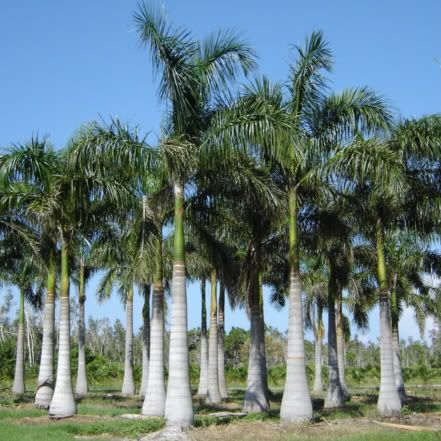 Bottle Palm
Bottle Palm
Bottle Palm
Notably popular as street or specimen trees, Bottle Palms make a neat, tidy, yet stately landscape element for large landscapes, often reaching 50 to 100 feet in height in almost as many years. The tall, smooth, cement grey trunks are capped with a glossy, green crown shaft several feet high and a beautiful, broad, dense crown of soft, gently drooping, feathery fronds.
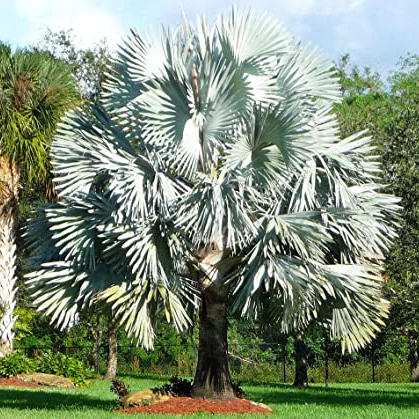 Bismarckia Palm
Bismarckia Palm
Bismarckia Palm
A truly amazing palm from the Indian Ocean island nation of Madagascar. The genus name honors - German Chancellor Prince Otto E.L VON Bismark Schohausen. There are two types of this palm a green leaved one and a silver - grey leaved one. They both grow in different areas in Madagascar. Blue sapphires are found in the area where the blue Bismarckia grows and large scale felling is done as people dig for these. The palm has a full rounded to oblong leaf crown 7 to 8 meters tall and six meters wide palms easily grow to 25 meters tall. leaf stalk or petiole splits at the base, where it is attached to the trunk. Leaf is carried on 2 to 2.5 meter petiole. Leaves and leaf stalks are covered with a white waxy substance. Male and female plants are seperate. Both are required to set viable seed.
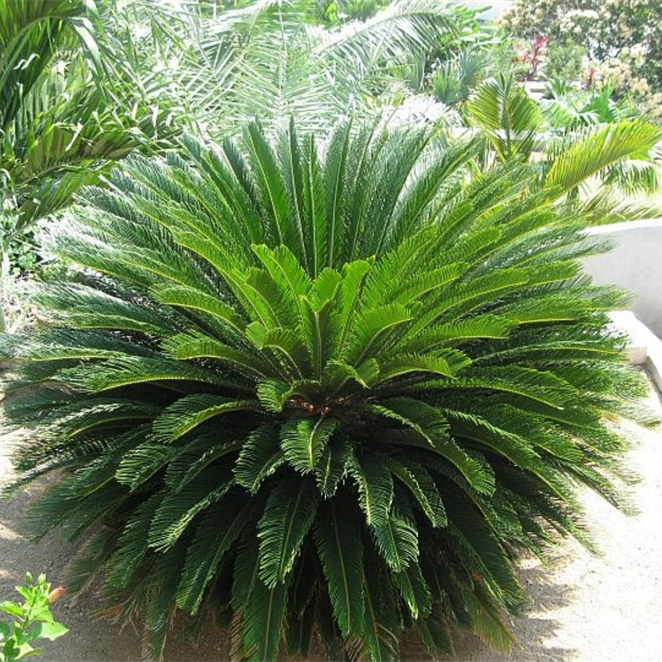 Cycas Palm
Cycas Palm
Cycas Palm
- This beautiful prehistoric plant comes to us from the southern islands of Japan. These are amongst the first seed bearing plants on earth. Its name is derived from the greek word kykas which means palm tree. Plants are relatively slow growing. They grow 7-10 ft tall in 15 to 20 years. Leaves are 2-3 ft long, deep green with decorative feathery leaflets. It is a popular garden and house plant all over the world. In Japan seed are made into an alcoholic drink and emergent leaves were used as a vegetable. Plants are excellent in pots and lawns. They make effective group plantings as well. Their use is limited only by our imagination. Can be grown single trunked - as a palm tree or as a multiple trunk - multiple level tree.
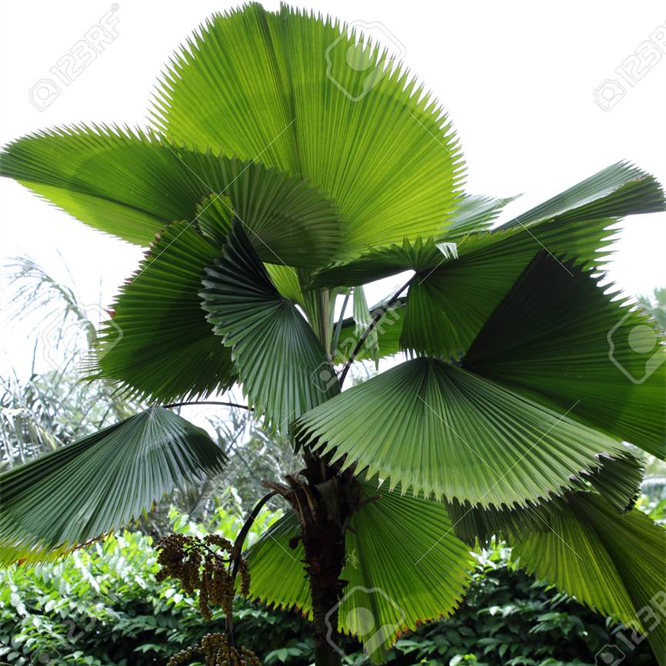 Pritchardia Palm
Pritchardia Palm
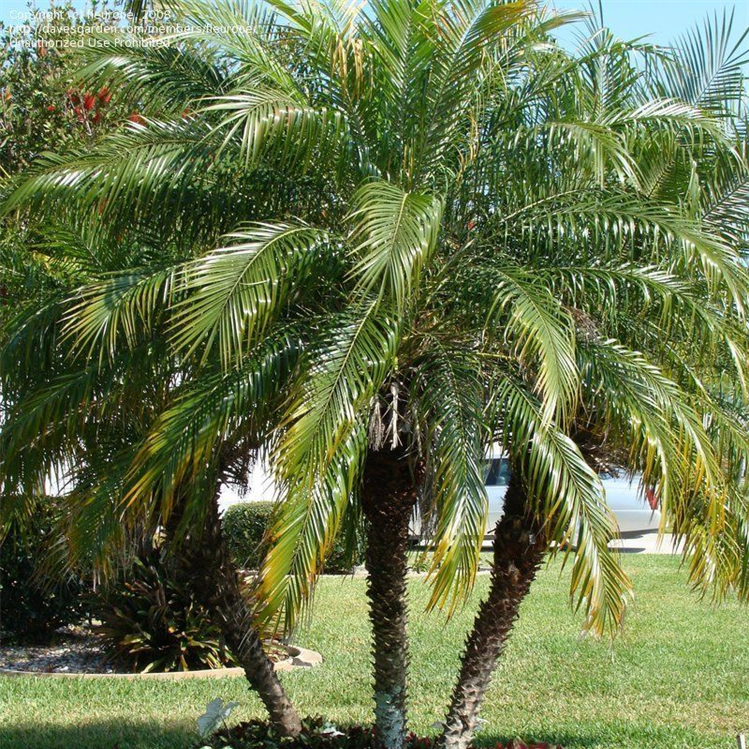 Phoenix Palm
Phoenix Palm
Phoenix Palm
hoenix roebelenii is a small to medium-sized, slow-growing slender tree growing to 2 to 3 metres (6.6 to 9.8 ft) tall. Pygmy date palm information allows that this particular genus is known as a date palm due to its often sweet, sugary fruit pulp found in some species of Arecaceae. the up to 6-foot long fronds of the pygmy palm tree may occasionally need reining in. Pruning pygmy palm trees is not a daunting task and merely requires periodical removal of aged or diseased foliage. When grown in soil with a pH over 7, the tree may develop magnesium or potassium deficiency with symptoms of chlorotic or spotted fronds.
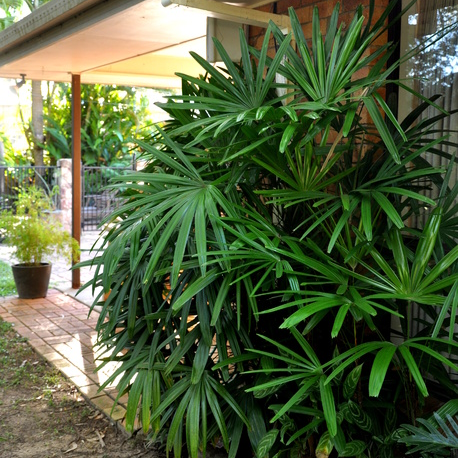 Raphis palm
Raphis palm
Raphis palm
One of the most popular palms of India, Raphis palm has delicate heads of fan-shaped leaves. Raphis Palm grows happily in the tropical and shoddy areas receiving little or no sunlight. Raphis Excelsa likes good air circulation and can look very decorative in staircase, in warm patios in summers, providing it receives little sun.
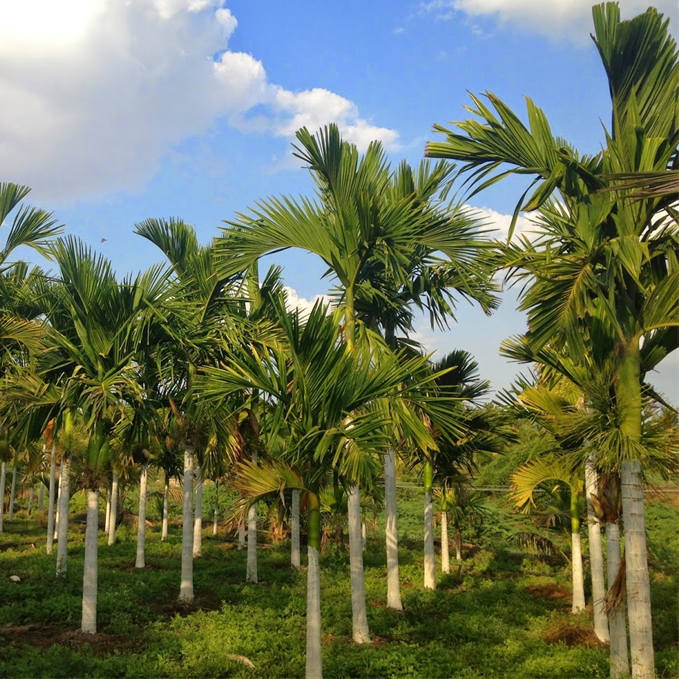 Areca Nut
Areca Nut
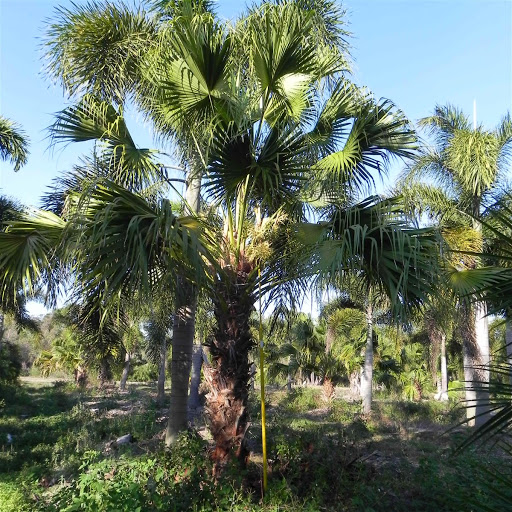 Table Palm
Table Palm
Table Palm
Botanical name of Table palm is Livistona rotundifolia. It has bold rounded evergreen leaves, medium-sized, single-trunked fan-palm. Young palm has relatively shallow-lobed leaves. Older palm has more deeply divided leaves with long lance-shaped segments that radiate like the spokes of an umbrella.
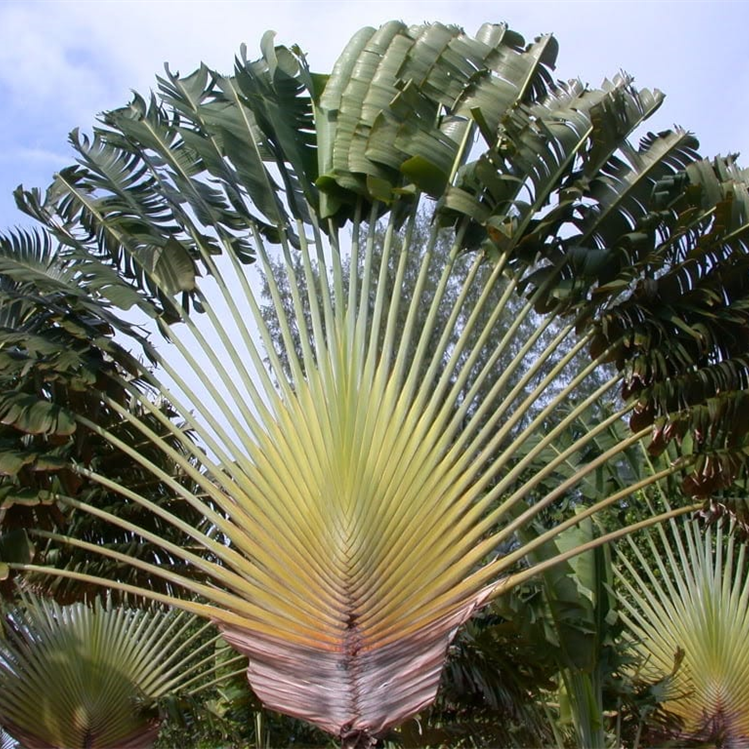 Travelers palm
Travelers palm
Travelers palm
- A commonly used plant in the tropics.
- Often called the Travellers Palm - even though - it is not actually a palm.
- Madagascariensis means 'of Madagascar'.
- Trunk palm like, hard with marks of leaf bases.
- 6-8 m tall under favourable environment.
- Flowers bracts with white blooms and sky blue seed.
- Cup shaped leaf bases hold healthy drinking water for thirsty travelers.
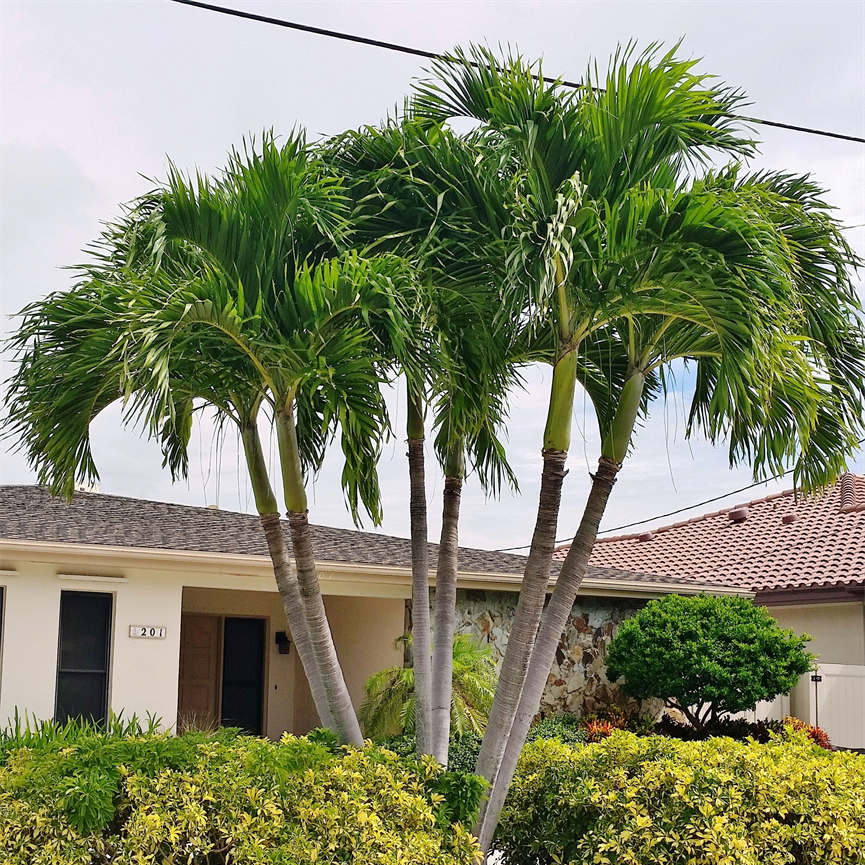 Manila palm
Manila palm
Manila palm
The Christmas Palm Tree, scientific name Veitchia merrillii, is one of the most popular palms in Florida. It has a lot of similar characteristics with Royal Palm Tree and sometimes is even called dwarf royal palm.
Christmas Palms Trees are much smaller and are easier to manage in comparison to the Royal Palm Trees. Christmas Palm Tree is great for indoors. The Christmas Palm has smooth slender grey trunk that is slightly swollen at the base and ringed with old leaf scars. The Christmas Palm may be used alone or may also be planted in groups of two or three.
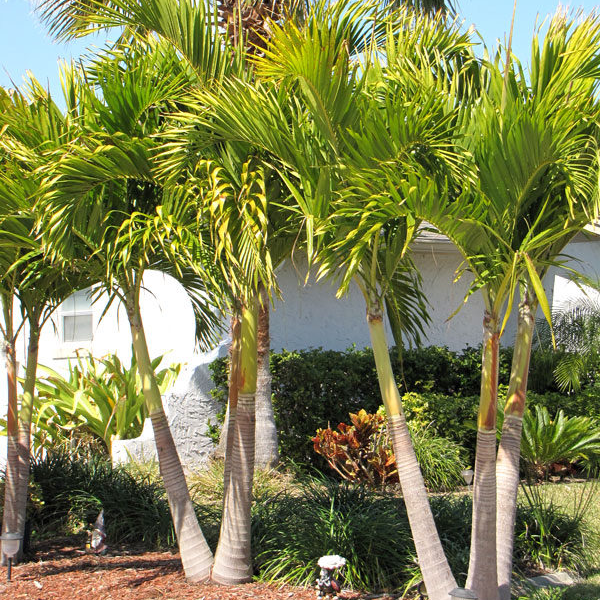 Golden Manila Palm
Golden Manila Palm
Golden Manila Palm
- This is a most stunning form of the green Manila palm. The leaves are bright golden yellow.
The regular Manila palm is described below.
- A very compact and versatile palm. Can be planted as single specimens in very small spaces or as groups in larger ones.
- Highly recommended for planting near swimming pools. The bright red fruit stays on the plant for several weeks and looks very pretty.
- Nation Philippine Islands.
- After Elmer D.Merrill - plant explorer of the asian tropics, former director of the Arnold Arboretum.
- Solitary trunked, monoecious, pinnate leaved palm.
- Grow to height 50 ft.
- Light to dark gray trunk 1 ft in diameter.
- The leaves are 6 - 8 ft long, short petiole, 1 ft long.
- There are usually 12 strongly arching leaves per plant.
- Flower and fruit with as little as 3 ft of trunk.
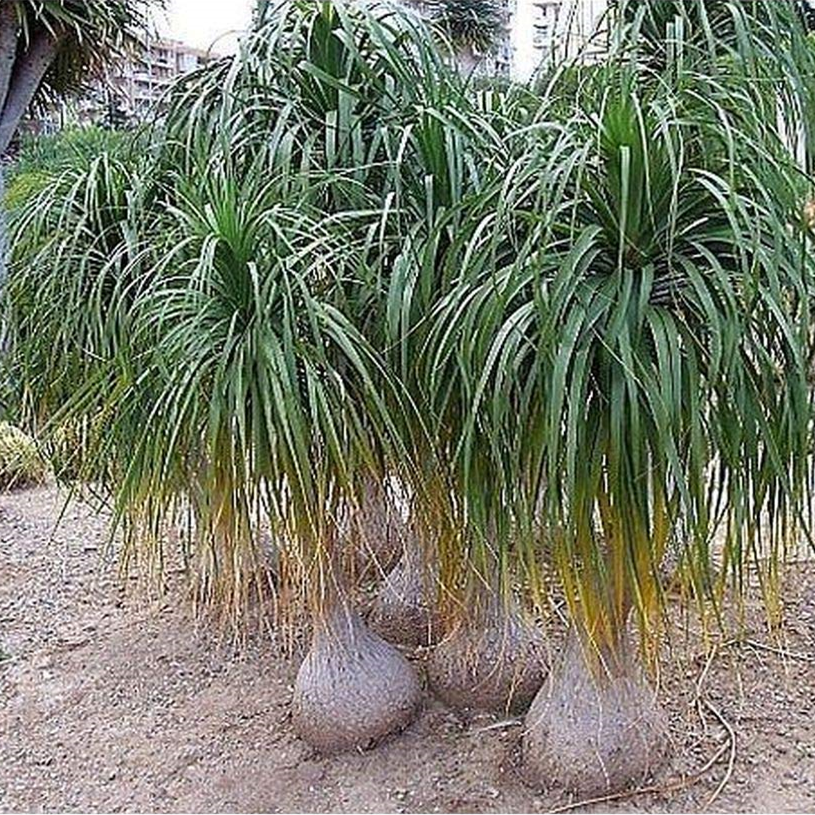 Nolina
Nolina
Nolina
Beaucarnea recurvata palm is a very slow growing palm. It has a unique bulky trunk as it grows older and older. It needs full sun to light shade, with a well-drained soil mix.
Ponytail palms have a very noticeable caudex, for the purpose of storing water.
The plants are available at two different heights i.e. 2 ft and 4to 5 ft at the rate of Rs350 and Rs1050 respectively.
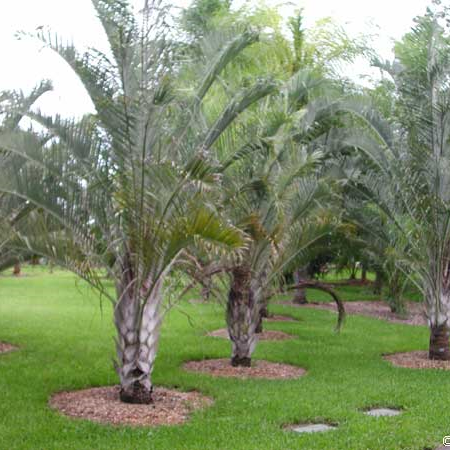 Triangular Palm
Triangular Palm

Triangular Palm
The exotic Triangle Palm Tree is native to South African Island of Madagascar and that is why it is also called Madagascar palm. The Triangle Palm Tree is named because of the irregular trunk shaped like a triangle. The Triangle Palm Tree is a recent palm brought into the United Stated and is a good container plant grown or it can grow to 25 feet in the ground. The feather-like leaves of the Triangle Palm are 15 feet in length and grow upwards at a 45° angle and arch downward slightly. The Triangle Palm grows best in sandy soil, full sun and needs regular watering. The triangle shape of the leaf bases makes the triangle palm trees from the island of Madagascar, a popular palm tree in the nursery trade. The Madagascar palm thrives in full sun and is cold hardy to below freezing temperatures. The Triangle palm will turn heads to attention when grown and planted at outside restaurants and cafes in containers. The Triangle palm is one of the most bizarrely formed plants ever grown and offered to buy at a nursery, because of the oddly shaped trunk and red clusters of cells on the underside of the blue-green leaves. The dark brown trunk with contrasting glowing, gray leaf scars are exotic in any office container planting.
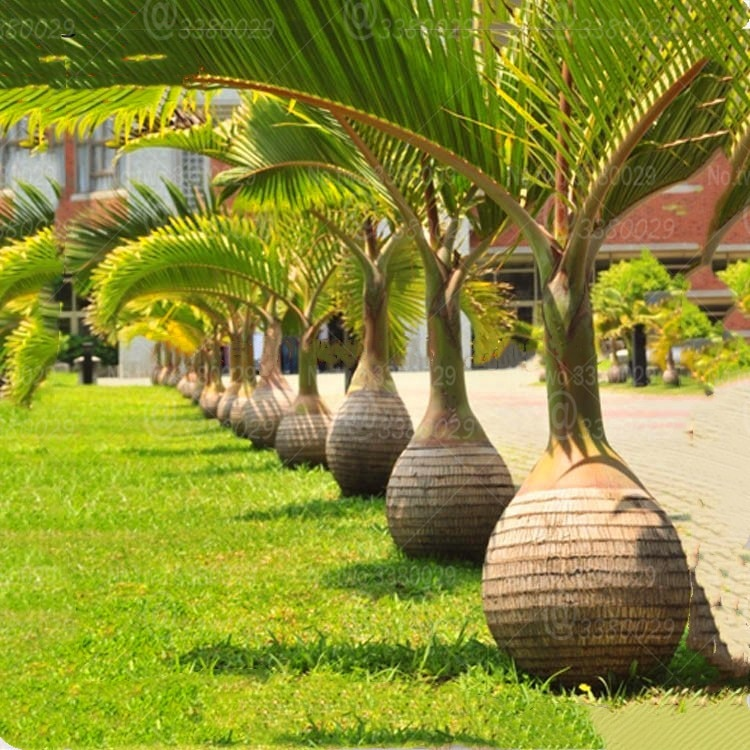 Champion Palm
Champion Palm
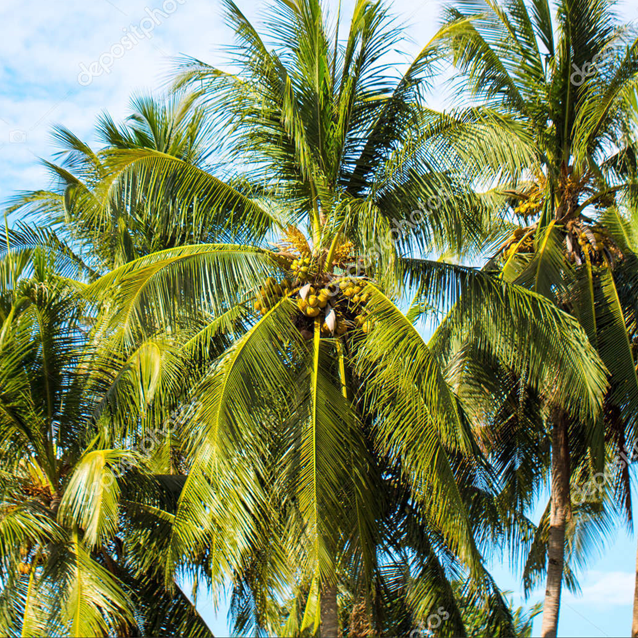 Coconut palm
Coconut palm
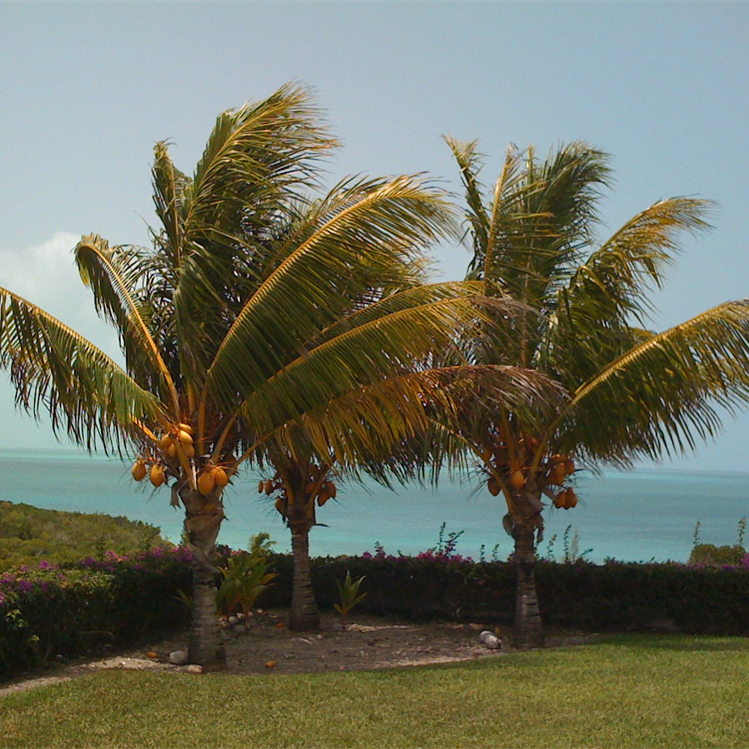 Golden Coconut
Golden Coconut
Golden Coconut
ocos nucifera is a large palm, growing up to 30 m (98 ft) tall, with pinnate leaves 4–6 m (13–20 ft) long, and pinnae 60–90 cm (2–3 ft) long; old leaves break away cleanly, leaving the trunk smooth. Coconuts are generally classified into two general types: tall and dwarf.Coconut oil is high in healthy saturated fats that have different effects than most other fats in your diet....
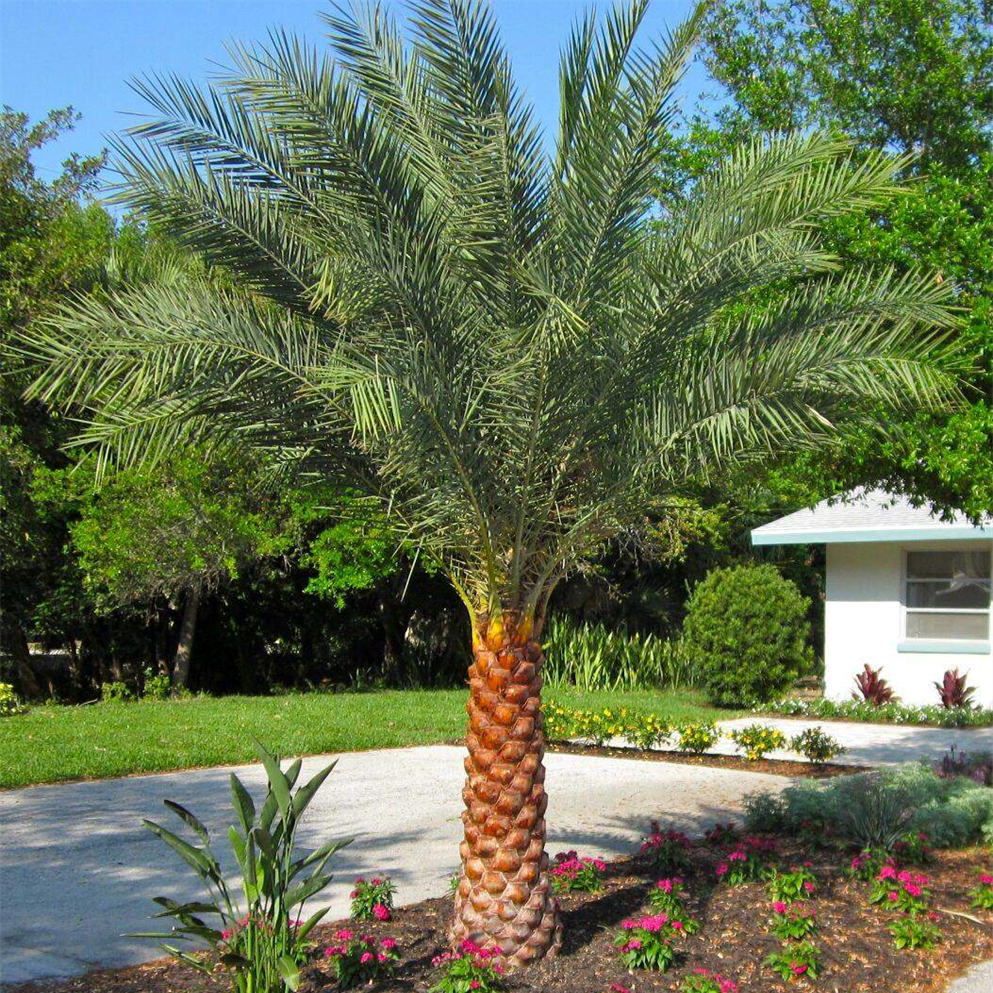 Date Plam
Date Plam

Date Plam
Phoenix dactylifera, commonly known as date or date palm, is a flowering plant species in the palm family, Arecaceae, cultivated for its edible sweet fruit. Although its place of origin is unknown because of long cultivation, it probably originated from lands around Iraq.
The species is widely cultivated and is naturalized in many tropical and subtropical regions worldwide. Date trees typically reach about 21 to 23 metres (69 to 75 ft) in height, growing singly or forming a clump with several stems from a single root system. The leaves are 4 to 6 metres (13 to 20 ft) long, with spines on the petiole, and pinnate, with about 150 leaflets.
The leaflets are 30 cm (12 in) long and 2 cm (0.79 in) wide. The full span of the crown ranges from 6 to 10 m (20 to 33 ft).Dates have been a staple food of the Middle East and the Indus Valley for thousands of years. There is archaeological evidence of date cultivation in eastern Arabia between 5530 and 5320 calBC.
They are believed to have originated around what is now Iraq, and have been cultivated since ancient times from Mesopotamia to prehistoric Egypt. The Ancient Egyptians used the fruits to make date wine, and ate them at harvest.
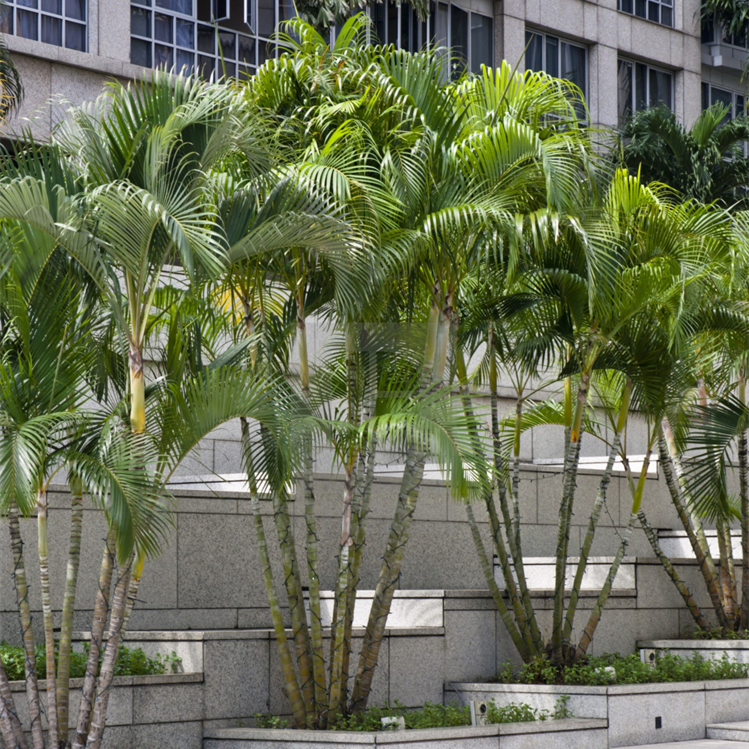 Areca Palm
Areca Palm
Areca Palm
Areca palm (Chrysalidocarpus lutescens) is one of the most widely used palms for bright interiors. It features feathery, arching fronds, each with up to 100 leaflets. These big, bold plants command attention. It is grown as an ornamental plant in gardens in tropical and subtropical regions, and elsewhere indoors as a houseplant.
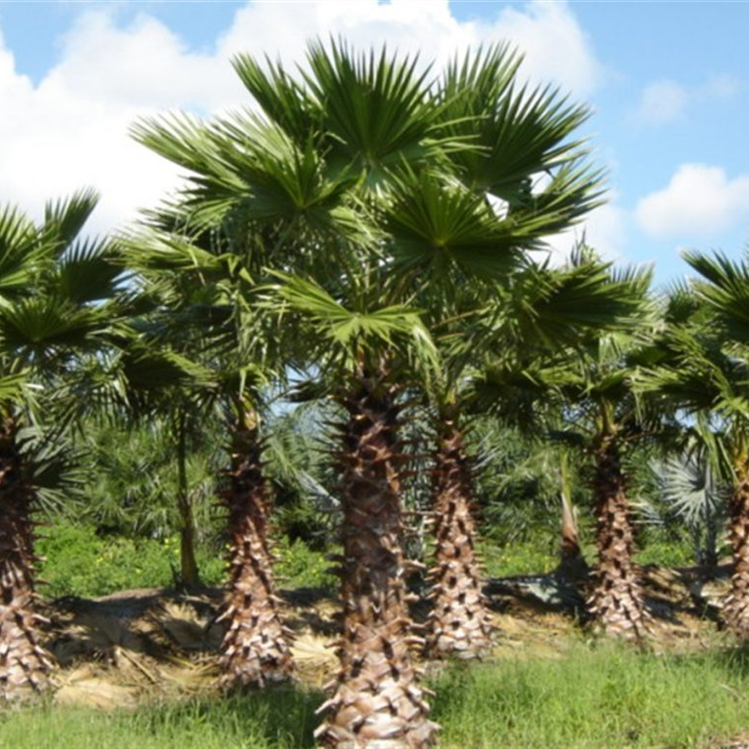 Washingtonia Palm
Washingtonia Palm
Washingtonia Palm
Washingtonia Filifera which means “thread-bearing” in Latin. This genus name honors George Washington, the first States. This palm grows up to 40 to 50 ft but capable of soaring to 80 feet in good growing conditions. Washingtonia Filifera Palm is better suited to the home landscape since it grows more slowly and is shorter. This also allows it to be used in more garden applications, such as containers or grouped together as a mass planting. The leaves have a petiole up to 2 m long, bearing a fan of leaflets 1.5-2 m long, with white, thread-like fibers between the segments. When the leaves die they bend downwards and form a skirt around the trunk. Washingtonia filifera can live from 80 to 250 years or more.
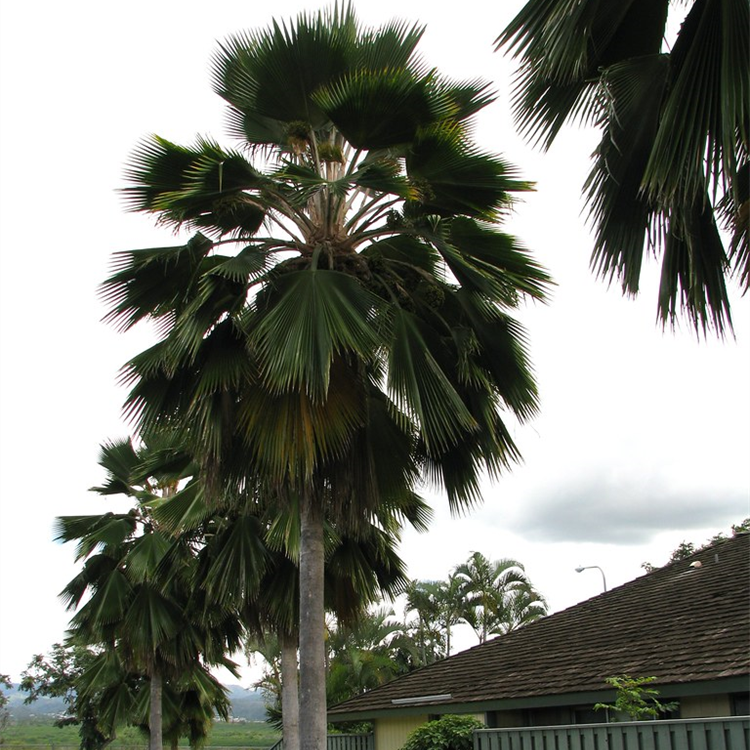 Pacifica Palm
Pacifica Palm
Pacifica Palm
Fiji Fan Palm is an attractive fan palm 7-10 m tall, with a trunk up to 30 cm in diameter. Leaves are up to 1.8 m long and almost as wide, the leaf blade is the same hairless dull green on both upper and lower surfaces, without any scales or spots underneath. Leaves are fan-like, closely palmately lobed. The spadices are shorter than the leaf-stalks. The spherical fruit is 1.1-1.2 cm in diameter, turning red then black at maturity. The seed is 7 mm in diameter. Fiji Fan Palm is native to Tonga, Fiji islands, introduced on many pacific islands.
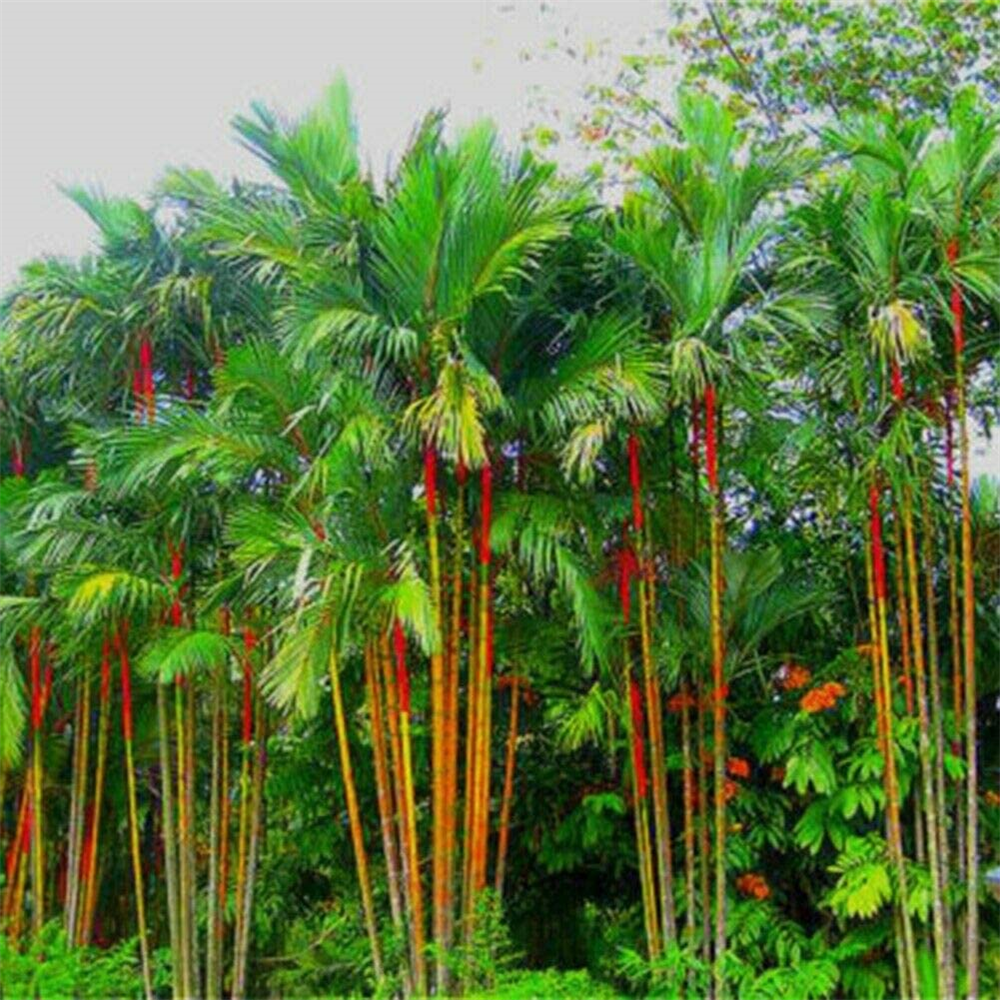 Red Palm
Red Palm
Red Palm
- A stunning palm. One of many reasons I would like to live on the coast!
- Originally from Malayan Region, Thailand.
- Beautiful palm slender stems in cluster.
- Trunk grow 30 ft high.
- Leaf crown 10 ft long, smooth.
- The petioles and rachis are the bright red colour of sealing wax - hence the name.
- Will not grow well away from the coast. Does well in all coastal areas of India.